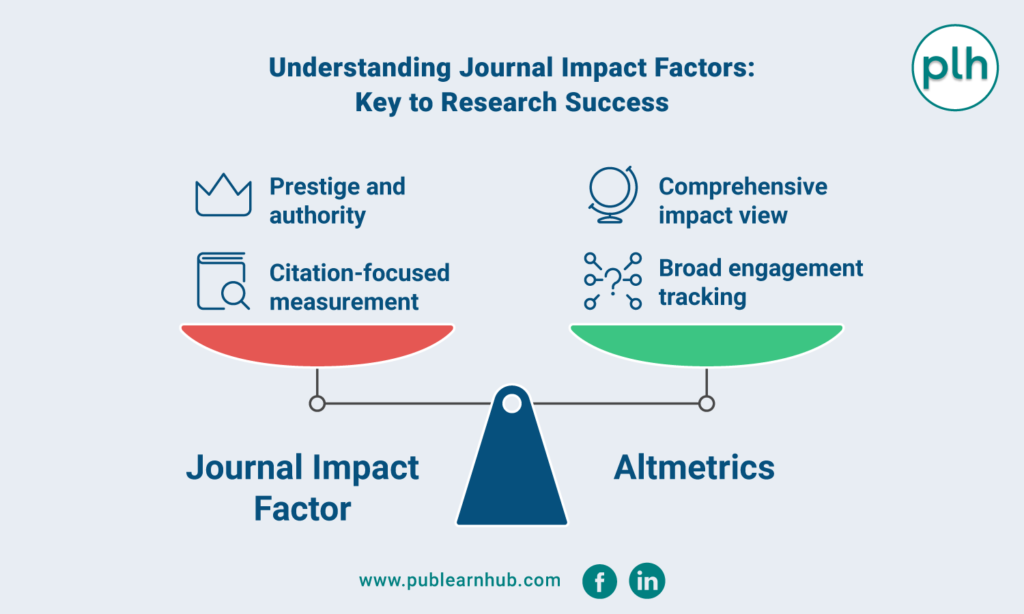Navigating Journal Impact Factors: Understanding Their Role in Research Success
Reading time - 2 to 3 minutes
Introduction
The Journal Impact Factor (JIF) has long been a cornerstone in academic publishing, serving as a measure of a journal’s influence and prestige. However, as the academic world evolves, researchers are increasingly questioning its relevance and looking for alternative metrics to evaluate research success.
What Is the Journal Impact Factor (JIF)?
The Journal Impact Factor is a numerical value that represents the frequency with which articles in a particular journal are cited over a specified period, typically two years. It is used by researchers, institutions, and funding bodies to assess the quality of journals and articles, often influencing publication decisions and career trajectories.
The Importance of Impact Factors in Research
JIF remains a widely recognized metric, often linked to prestige in academia. High-impact journals are considered authoritative sources, and publishing in them can enhance a researcher’s credibility, visibility, and opportunities for collaboration. For universities and research institutions, JIF is also a critical tool for evaluating the impact of faculty members’ research output.
Limitations of the Journal Impact Factor
Despite its widespread use, the Journal Impact Factor has several limitations. One key criticism is its narrow focus on citation counts, which doesn’t necessarily reflect the quality, novelty, or real-world impact of research. Moreover, JIFs can be skewed by self-citations, citation manipulation, or a journal’s field of study.
Alternatives to Journal Impact Factor: Altmetrics
As an alternative to JIF, Altmetrics (alternative metrics) have emerged as a more holistic way to measure research impact. Altmetrics track a wide range of activities, including social media mentions, blog posts, news coverage, and other online interactions. These metrics provide insights into how widely research is disseminated and engaged with beyond traditional academic circles.
While Altmetrics offer a more comprehensive picture of a research article’s influence, they also come with challenges, such as data reliability and the potential for bias in online engagement. However, they serve as a valuable complement to the Journal Impact Factor, offering researchers a broader perspective on their work’s impact.
Conclusion
While the Journal Impact Factor remains a widely used metric in academic publishing, it is crucial for researchers to be aware of its limitations and consider alternative metrics like Altmetrics. Combining both can offer a more balanced and accurate understanding of research success, helping researchers, institutions, and policymakers make more informed decisions.
By acknowledging the strengths and weaknesses of both traditional and alternative metrics, researchers can navigate the complex landscape of academic publishing and make choices that align with their unique goals and values.
